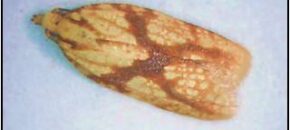Plectosporium blight, also known as Microdochium blight or White speck, caused significant problems in some pumpkin fields the last few summers in New Jersey. The soil-borne fungal pathogen, although somewhat uncommon, can unexpectedly show up in some years and cause significant losses if left uncontrolled. The fungus survives in the soil on decaying plant debris […]
Continue reading...Recognizing Angular Leaf Spot in Cucurbits
Angular leaf spot, caused by the bacterium (Pseudomonas syringae pv. lachrymans), is common in New Jersey and the region. Although it often shows up during cooler, wet weather; it can show up almost anytime during the production season with favorable weather conditions for its development. Angular leaf […]
Continue reading...Additional Information for New Jersey Farm Owners on H5N1 Bird Flu
The New Jersey Departments of Health (NJDOH) and Agriculture (NJDA) are closely monitoring the emerging situation with H5N1 bird flu and would like to provide important information to New Jersey farm owners. Please refer to the memo from NJDOH and NJDA: Information for Farm Owners and Farm Workers (highlights provided below). The public health risk of […]
Continue reading...Identifying and controlling leaf mold in high tunnel & greenhouse tomato production
Leaf mold occasionally appears in high tunnel or greenhouse tomato production in New Jersey. However, under ideal conditions the disease will develop in field-grown crops. The fungus will cause infection under prolonged periods leaf wetness and when relative humidity remains above 85%. If relative humidity is below 85% the disease will not occur. Therefore, the […]
Continue reading...Vegetable IPM Update 6/12/24
Sweet Corn European corn borer (ECB) moths continue to be captured in blacklight traps in the northern and central counties, with highest moth activity in Middlesex, Somerset and lower Hunterdon counties. The highest feeding levels are in Somerset and southern Hunterdon Counties. ECB injury over 20% of plants infested has been found in that […]
Continue reading...Insect Pest Management During Bloom – June 12, 2024

Cranberries have started to bloom, and bees are active in bogs. If insects have been effectively managed prior to bloom, we recommend no sprays at this time. A reminder: when bees are present, your choices of insecticides are insect growth regulators (IGRs) such as Intrepid 2F or Bt products such as DiPel. During bloom, we […]
Continue reading...